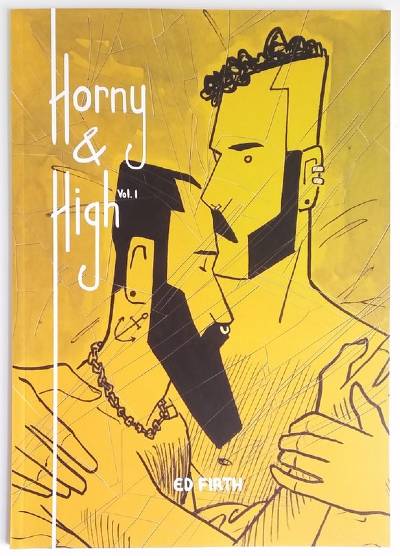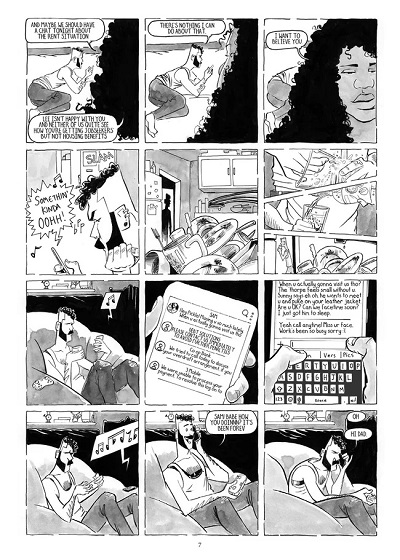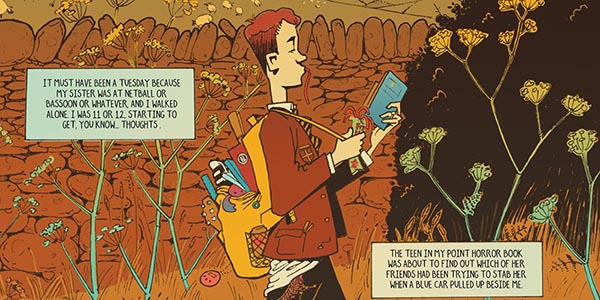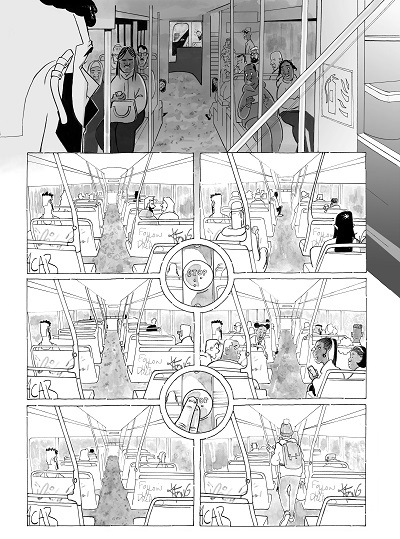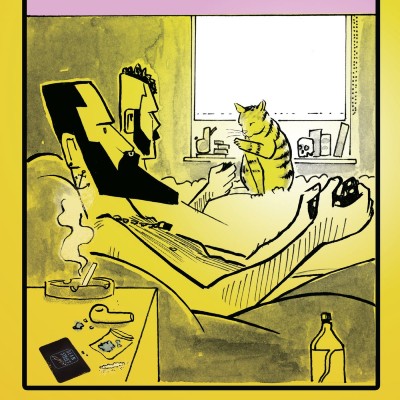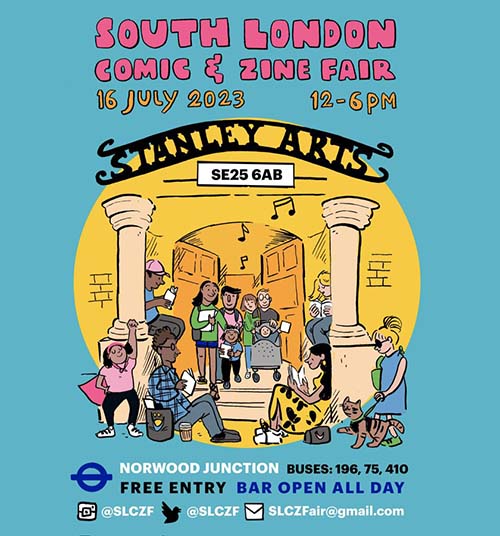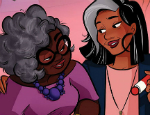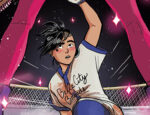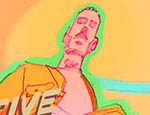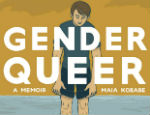SLCZF 2023! Since we interviewed comics creator Ed Firth at Broken Frontier back in 2021 his series Horny & High has become something of a constantly selling-out phenomenon. An uncompromising exploration of queer chemsex culture the first volume has been picked up for publication in Germany and the US. In fact it’s been something of a banner year for Firth with a collection of his Pound Shop zines and a joint runner-up placing in the Faber/Observer/Comica short story competition. And, of course, he was named one of BF’s ‘Six to Watch‘ artists for 2023.
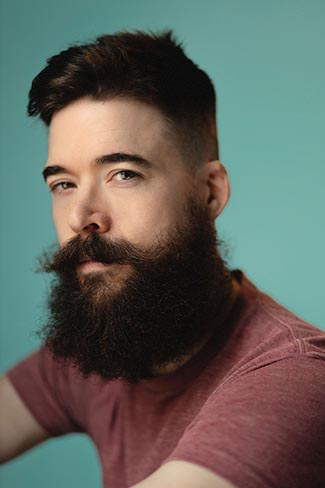 Ahead of his SLCZF appearance on Sunday we caught up with Ed to talk about his whirlwind year, the growing profile of Horny & High, and what makes comics such a powerful medium for communicating the stories of marginalised voices…
Ahead of his SLCZF appearance on Sunday we caught up with Ed to talk about his whirlwind year, the growing profile of Horny & High, and what makes comics such a powerful medium for communicating the stories of marginalised voices…
ANDY OLIVER: Since we last interviewed you your series Horny & High has gone from strength to strength, needingconstant restocks in comics shops and being picked up for international publication. In terms of not just narrative and comics craft but also the social issues it explores, what have been some of the more rewarding and/or interesting feedback you’ve received?
ED FIRTH: Probably the most bizarre feedback was at ASP 7 last year when someone picked up volume 2, flipped through it and asked “do you have a heterosexual version of this?”. I was speechless. But more commonly I get DMs and feedback from people on social media thanking me for writing about this world without downplaying how shocking and miserable it can be as well as how tempting it can look, how people get trapped in a downward spiral by the promise of ecstatic, energetic, fulfilling fun that hollows you out like a curse.
You can be going through this miserable and degrading cycle but even your best friends and closest family know nothing about it, maybe they just notice you’re less reliable or not yourself. Since publishing I’ve had people I’ve known for many years confess they’ve struggled with chemsex addiction and have never told anybody about it. The chemsex crisis is possibly the worst thing the LGBT+ community has faced since AIDS, and just as then, people are silenced by the shame around it, the feeling that they did this to themselves, and often that they can’t stop. So that feedback makes me feel this is something worth continuing with.
AO: What can you tell us about the formats for the upcoming US and German editions of Horny & High? And how did they arrive at the publishers they did?
FIRTH: Back in 2018 I put out the final issue of my art zine Pound Shop and I didn’t know what was coming next – the zine was doing really well but I didn’t want to keep churning it out, I wanted to move on to something else. I messaged Ralf König on Facebook and asked if I could send him a copy. Ralf has been making comics for 4 decades, some of his comics were made into films and in fact that’s how I heard about him – when 90s late night channel 4 show Eurotrash ran a segment about the making of The Killer Condoms, a story about a gay detective investigating sharp-toothed condoms that castrate men.
This was before you could just immediately buy something on your phone, so I didn’t get to read the comic until many years later, but a seed was planted in my mind – also the R. Crumb documentary on BBC 2 triggered an incredible excitement in me about the id-unleashing potential of the medium. Up until then the racy and subversive potential of comics had been confined to Viz, which is still a fine satirical publication but was never particularly queer. Anyway Ralf was very complimentary and sent me his latest book and some original art by reply, and we’ve been in touch ever since. He’s been hugely supportive of my work and passed both volumes on to one of his publishers, Mannerschwarm, who offered to translate it into German for distribution on the continent.
The USA edition came about after I set up an international queer comics Zoom group during lockdown. We only had maybe 4 or 5 meetings, but one of the attendees was Zan Christensen who runs the San Francisco-based NorthWest Press, and after Brexit started to bite and postage became more expensive I realised I was going to need help distributing the work in the USA. Zan had been collecting the comics so I asked if he would be interested, and we started working on an expanded edition of vol 1 with some new art, and some more space for the work to breathe. It was my first graphic novel and when I put it out I didn’t know if it would sell, so it was naive and conservative in its page count – the new edition is more luxurious; more title pages. Both books are the same dimensions but vol 1 is now thick enough to get a printed spine, so everyone should buy it again for that completist bookshelf aesthetic.
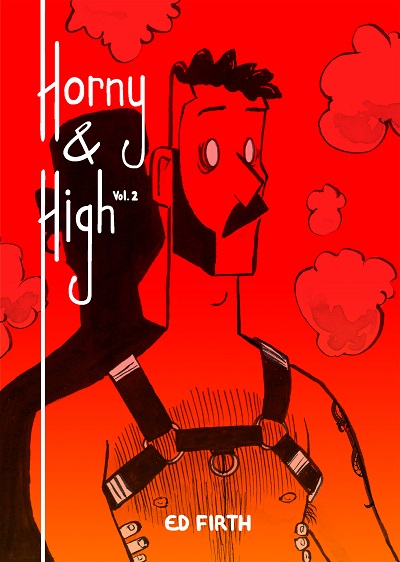
AO: As someone who has been published by others and has also self-published what do you see are the relative advantages and disadvantages of both roads to an audience?
FIRTH: Self-publishing is where the money is at. I make more in pre-sales for one self-published book than I’ve made from signing two contracts. But I can’t roll out the book abroad without incurring all kinds of other costs (or language barriers) so I’m giving this a whirl. Personally I’ve always been one to do my own thing even if trotting down the same path as everyone else would be a lot wiser, and I like toiling away on my own. It suits me and I feel validated by knowing that for better or worse, this thing sprang forth from my consciousness and nobody else had a say in it.
I know most people don’t have the time, energy, bandwidth, experience and confidence to be a self-contained self-publishing cottage industry, but I found my way here by accepting I can’t rely on someone else to pay my wages, I’d rather make the tea, sweep the floors, sign the cheques and shake on it over lunch myself. Whilst Rich at ComicPrintingUK does all the real work of turning my pdf into a book down in the paper mines.
AO: What can we expect in story terms from Horny & High volume 3?
FIRTH: Well, things take a turn for the psychedelic, there’s a hot take on Pride in London, and some familiar characters reveal some other sides of themselves. And there will be colour. I’m working on about 5-7 stories and already some are spilling into vol 4. It’s still set in the 2010s in London. And it’s still about chemsex.
AO: You recently had a very successful crowdfunding campaign for a collection of your long-running Pound Shop artzine. How important was that project to you in your development as an artist?
FIRTH: I’m constantly nagging every creative person around me to do a zine. The bar to enter is floor-level. You (you! Reading this!) already have the material for a zine – throw it together, print, distribute. Rough edges are the point. You iron things out in issue 2 (or correct them in the reprint, making the original run more collectable!). Issue 3 completely blows the first two away.
I was in a bad place when I made the first zine, the moving-image career I’d chosen had reached the end of the line, leaving me facing the crushing fact that my identity and self-esteem was wrapped up in my creativity and nobody wanted to pay for it. Returning to drawing was redemptive, I started to remember the thrill of it. The joy and reward of it. The drive to improve, explore, share and connect through it. And then when it started selling I appreciated the independence – not requiring a gig, a paymaster, someone to take a chance on you. The work itself was the work I wanted to do, it came out of the overstimulating creative ambience of tumblr, a mix of every era of art and photography, beauty and porn and ribtickling memes and shitposting all together, and from that primordial soup I fished the croutons of Pound Shop; the images that were already beautiful but triggered a desire in me to make them beautiful in my own way.
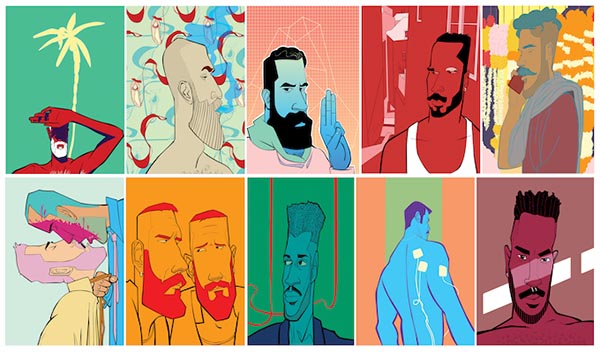
A sample of pages from Pound Shop
There was also a release from the feeling that I should be creating fine art, that I had artistic genius to express. What if you just make something nice? People like nice things. I thought illustration was a cop-out and portraits were a waste of time. Making the zine quietened that critical voice, allowed me to make the thing I wanted to make without automatically attacking it. With that done, I was able to approach the comics with a new angle where I was constantly asking, how do I make this more uncomfortable for the reader? How do I make it more raw for me, what is the truth I’m picking at with this scene or this story? Because I’d made beautiful things and put them out in the world, I’d cleared the way to make something that addressed that consuming greed for beauty and sex, without the distracting vanity of needing to prove I can make something beautiful.
AO: Last year you were joint runner-up in the Faber/Observer/Cape competition. What was the premise of that short story and what are the specific challenges of connecting with an audience in such a concise narrative space?
I was really glad of the 4-page limit, and I could have crammed a lot more action and dialogue in there but I went the other way and tried to streamline the story down to its elements. It felt dangerous to publish because there are still people foaming at the mouth about “grooming”, and this is the story about how an adult approached me when I was right on the cusp of adolescence and only just starting to experience vague, guilt-ridden same-sex ideations, and afterwards I kept replaying the moment and imagining how else it could have gone. Which is natural when someone imposes themselves on you inappropriately!
During the writing process I also recognised the other story it hinted at, about how people like that get away with it and go on to re-offend. My advice to anyone entering the contest is: be sure to format the work to the spec provided when you start sketching! Or you’ll have a lot of tedious photoshopping ahead of you. I did find it hard to squeeze in the opening paragraph, there were specifics that felt key to the moment – I tried cutting a lot of phrases and sentences, and maybe if I reprint this somewhere I will find something to slash and burn.
AO: We’ve just come out of Pride Month at a point in history where transphobia has never been so rampant, and hard-fought for queer rights are being rolled back across the globe. What is it about comics as a medium for you that makes it such a powerful form for social activism and for communicating the lived experiences of marginalised voices with such eloquence and empathy?
FIRTH: There is something particularly intimate about comics, including the frailty of the imperfect image. Lynda Barry is such a brilliant communicator, and the simplicity and awkwardness of her drawings works with the text to create a feeling of raw confession, stories that had to be told now, with ruthless urgency, maybe late at night, maybe in the dark, just you and the creator. Small press work can be even more intense: when you know you’re reading a true account both written and drawn by one person, who also published it, you know that no studio has interfered with it, there were no focus groups, nothing has been filed down or pared back by a legal team, and the naivete of the work convinces you the storyteller isn’t sophisticated enough to lie to you, that this is a heart-to-heart deep ‘n’ meaningful.
People whose identity crosses strongly policed social boundaries, such as race, class, nationality or gender, are perfectly positioned to appeal to a broader audience, help us open our minds and recognise the limitations we place on ourselves and each other. Some trans comics artists I’m into right now include:
(on insta)
Beck Carlton @bear_patrol
(on twitter)
george williams @neatodon
Panic Volkushka @panicvolkushka
Remy Boydell @slimgiltsoul
AO: What other projects have you got coming up? Both in comics and other areas of the arts?
FIRTH: I’m currently finishing a new strip for the upcoming WIP anthology, sending riso zines to print for my table at SLCZF and Q-Mart, drawing new obscene ink work for the Tom of Finland Arts & Culture Fair, reprinting HnHv1&2 again, and completing fresh art for the new hardback art book Pound Shop: Decade, which will be ready in time for PrideCAF, LICAF, Winchester Comics Fair and Thought Bubble! When the hardback is finished I can’t wait to resume work on HnHv3 – it’s written I’m about ready to start thumbnailing.
This has been the most insanely busy (and rewarding) year already, and I’ve had to develop my organisational skills to match. I have an open document where I add a new to-do list every morning, ticking off the accomplishments. This isn’t just so they get done, it’s so that I have an ongoing record, in one place, of just how much work I put into this. I could keep it in my head supplemented with the occasional post-it reminder, but then the story of my daily, independent, self-directed labour and productivity is lost, and the much more appealing and “true”-feeling story that I’m lazy and chaotic is the one I tell myself.
And I also have another open doc with what I’ve titled a Writing Diary, because I wanted to document the writing process so I would actually remember all the ins and outs of it, but it’s become more than that, it’s an ongoing conversation with myself in which, maybe 2-4 times a week, I start a new entry and describe how I’m feeling about all the tasks I have ahead of me, assess which order to do them in, discuss money, time, uncertainty, ideas – an emotionally honest professional chat, externalising the multitude of possibilities presented, and the feelings that guide my hand to the right ones. These are not groundbreaking ideas but I’ve never implemented them like this, two ways of telling and shaping my own story as a creative. It’s been a gamechanger, it’s like having a career coach – yet another role I’ve taken on!
Interview by Andy Oliver
SLCZF is held at Stanley Arts on July 16th. More details here.





